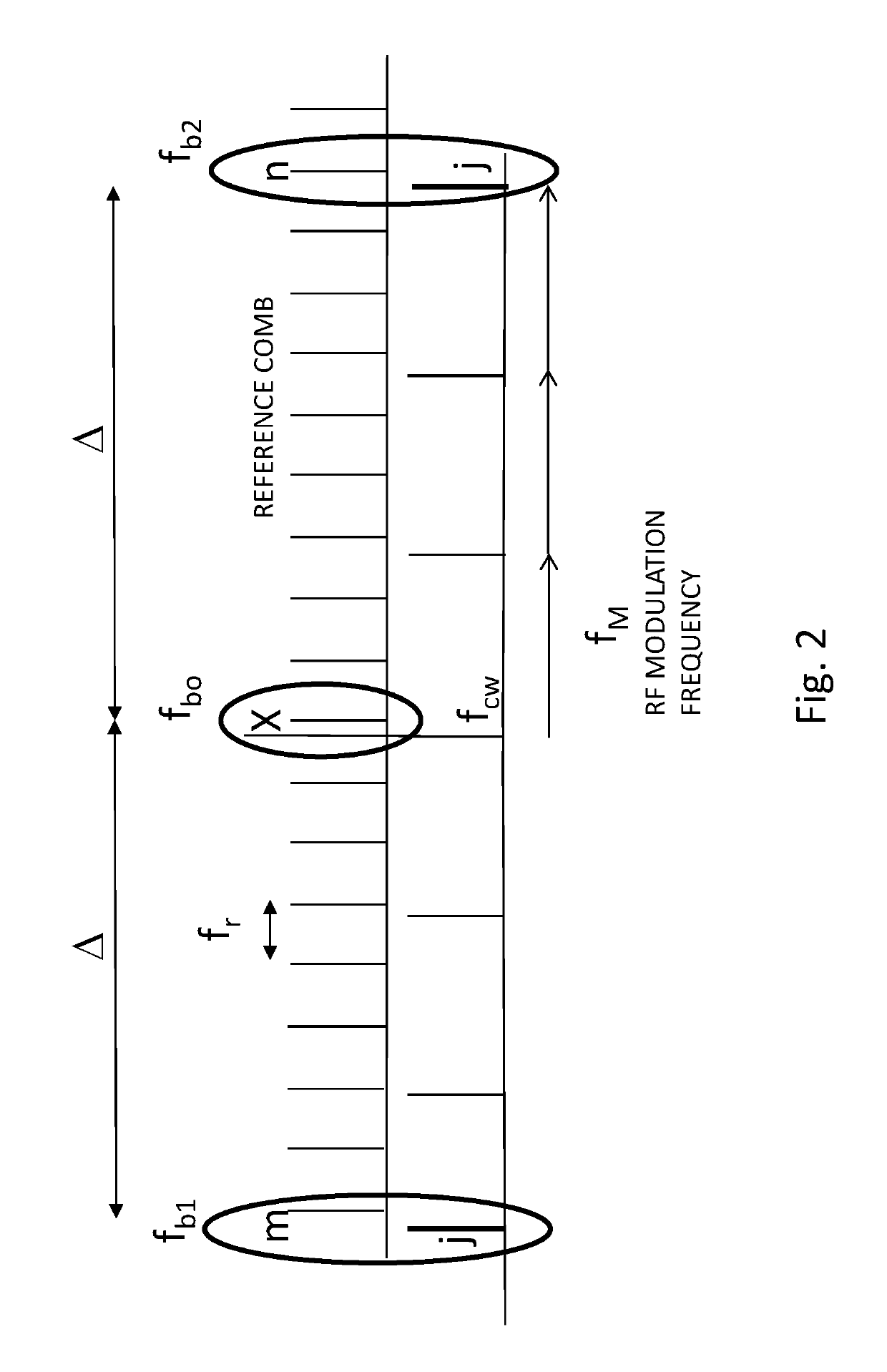Systems and methods for low noise frequency multiplication, division, and synchronization
a technology of low noise frequency and multiplication, applied in the field of electromagnetic frequency manipulation systems and methods, can solve problems such as impede the use of frequency references, and achieve the effects of reducing the phase noise of vcos, and increasing the spectral extent of said side-bands
- Summary
- Abstract
- Description
- Claims
- Application Information
AI Technical Summary
Benefits of technology
Problems solved by technology
Method used
Image
Examples
Embodiment Construction
Overview
[0043]To overcome one or more disadvantages associated with increasing phase noise with increasing RF frequencies, it may be useful to use frequency standards in the optical domain and to then generate RF frequencies via frequency division, which can theoretically produce a reduction in phase noise proportional to the square of the division factor. To enable low noise frequency division from the optical to the RF domain, low noise frequency combs are highly beneficial, as for example described in J. Hall and J. Ye, ‘Merging the Ultrasensitive, the Ultrastable, and the Ultrafast; A new Era of Frequency Standards and Optical Frequency Measurement’, Optics and Photonics New, pp. 44, February 2001. Low phase noise RF generation from frequency combs was subsequently also discussed in U.S. Pat. No. 7,026,594 to Holzwarth et al.
[0044]As an alternative to frequency combs, low phase noise RF generation was also described based on resonators operating in the optical domain using opto-...
PUM
 Login to View More
Login to View More Abstract
Description
Claims
Application Information
 Login to View More
Login to View More - R&D
- Intellectual Property
- Life Sciences
- Materials
- Tech Scout
- Unparalleled Data Quality
- Higher Quality Content
- 60% Fewer Hallucinations
Browse by: Latest US Patents, China's latest patents, Technical Efficacy Thesaurus, Application Domain, Technology Topic, Popular Technical Reports.
© 2025 PatSnap. All rights reserved.Legal|Privacy policy|Modern Slavery Act Transparency Statement|Sitemap|About US| Contact US: help@patsnap.com



